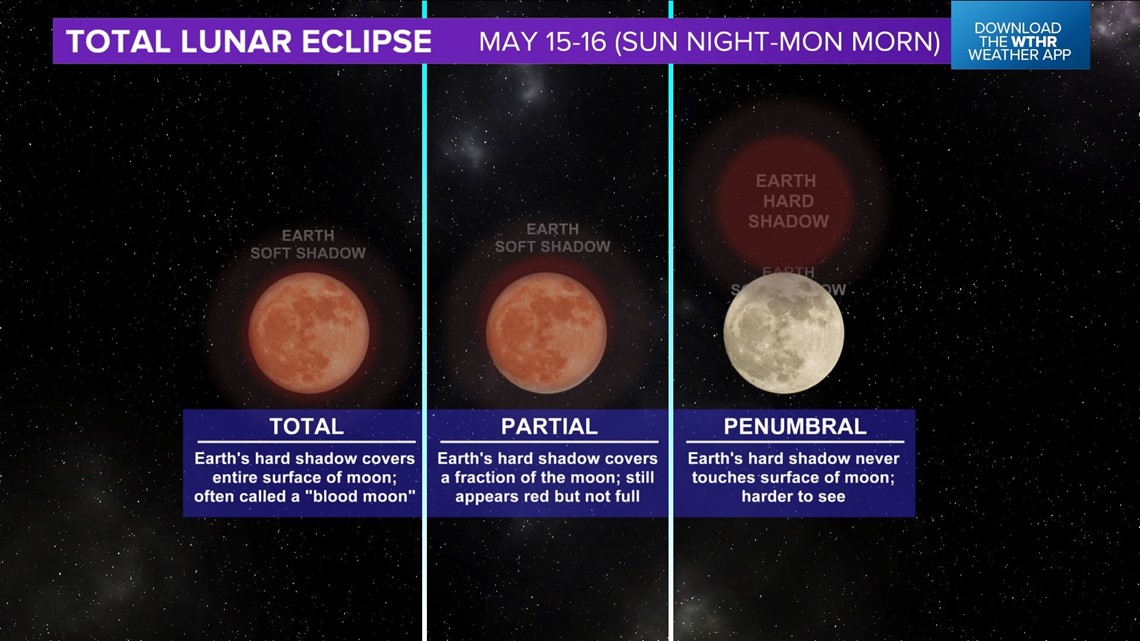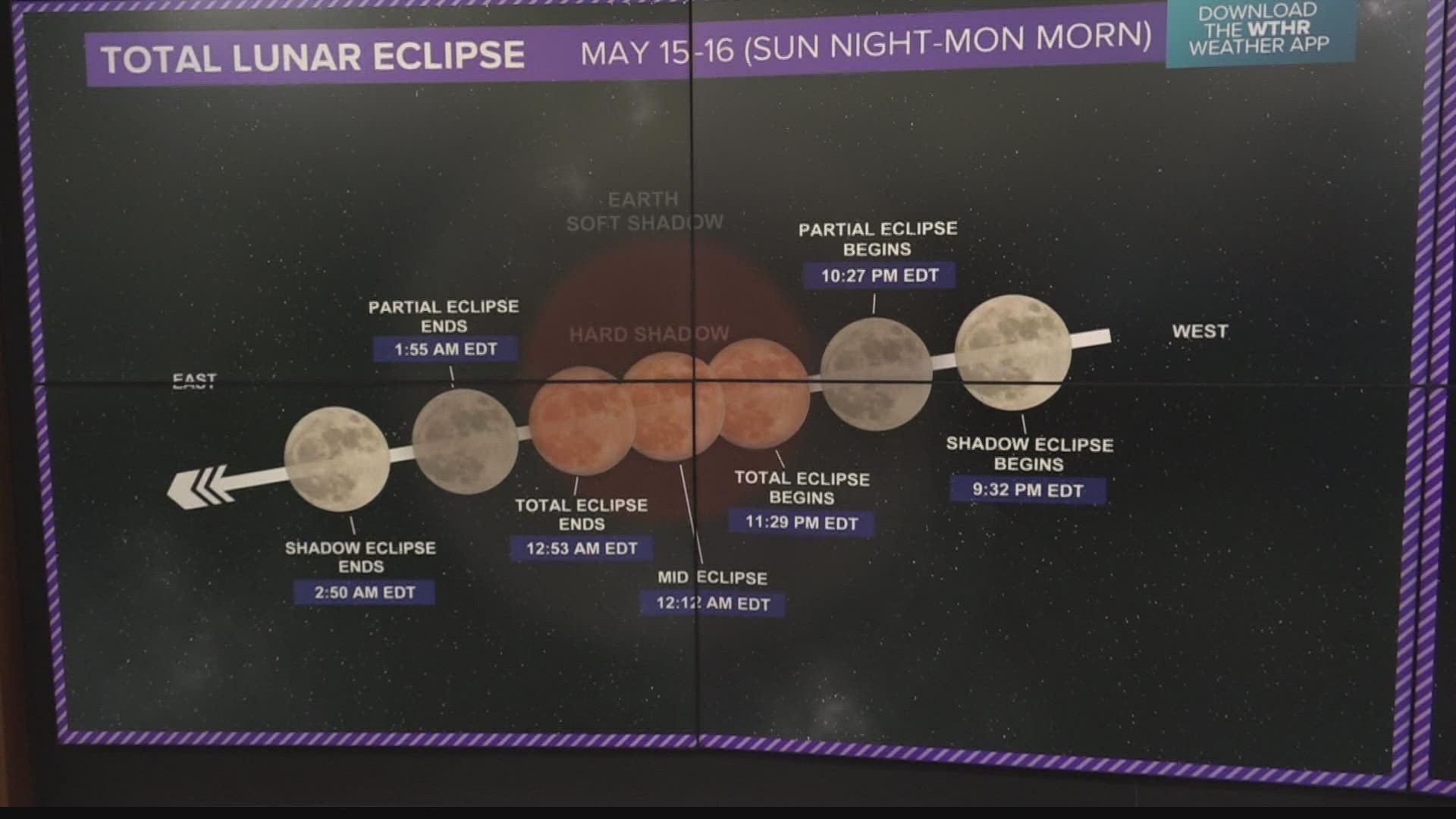INDIANAPOLIS — We're in for a real treat in the sky the end of this weekend as the Earth's orbit takes it between the sun and moon...resulting in a lunar eclipse.
There are different types of eclipses based on how much of the Earth's shadow covers the moon. Here's a description of each from NASA:
- Total lunar eclipse
The Moon moves into the inner part of Earth’s shadow, or the umbra. Some of the sunlight passing through Earth’s atmosphere reaches the Moon’s surface, lighting it dimly. Colors with shorter wavelengths ― the blues and violets ― scatter more easily than colors with longer wavelengths, like red and orange. Because these longer wavelengths make it through Earth’s atmosphere, and the shorter wavelengths have scattered away, the Moon appears orangish or reddish during a lunar eclipse. The more dust or clouds in Earth’s atmosphere during the eclipse, the redder the Moon appears. - Partial lunar eclipse
An imperfect alignment of Sun, Earth and Moon results in the Moon passing through only part of Earth's umbra. The shadow grows and then recedes without ever entirely covering the Moon. - Penumbral eclipse
If you don’t know this one is happening, you might miss it. The Moon travels through Earth’s penumbra, or the faint outer part of its shadow. The Moon dims so slightly that it can be difficult to notice.




The event this weekend will be a total lunar eclipse, which means the Earth's "hard shadow" will blanket the Moon for a time resulting in a reddish appearance that's known as a Blood Moon.
This last occurred in May of last year.


Weather permitting, we'll be able to see the partial eclipse beginning at 10:27 p.m. Sunday night. Total eclipse begins at 11:29 p.m. and lasts until 12:53 a.m. with mid-total eclipse around 12:11 a.m. Monday morning (5/15).
The partial eclipse ends at 1:55 a.m. Monday morning and marks the end of this total lunar eclipse.
If we miss this weekend, the next total lunar eclipse will be this November 8th.

